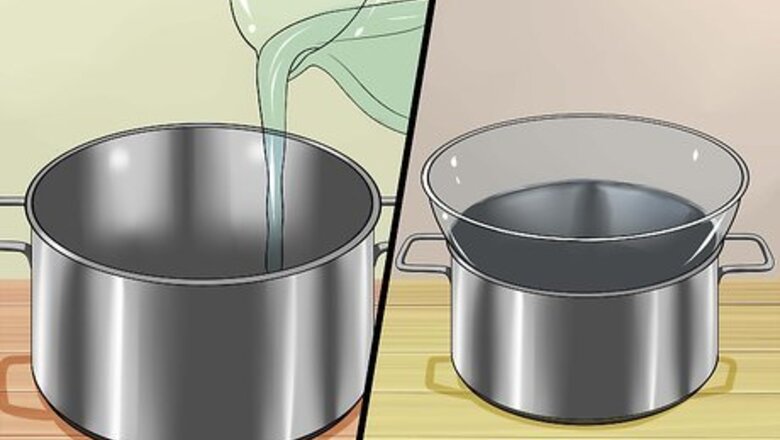
views
Setting Up
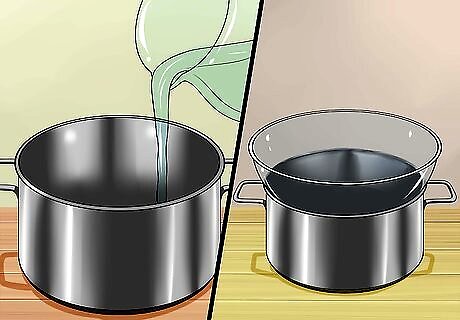
Set up a double boiler. Fill a large pan with about 3 to 4 inches (7.5 to 10 cm) of water. Place a slightly smaller pan in the water, ideally without the bases touching. This setup lowers the risk of scorching and burnt flavors.
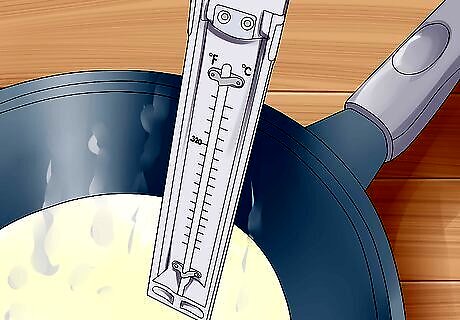
Put a clean thermometer in the top pan. You'll want to track the temperature constantly, so a floating dairy thermometer or a clip-on candy thermometer works best. Wash the thermometer in hot, soapy water first, then rinse. Ideally, sanitize the thermometer by rubbing it with a single-use alcohol swab, then rinsing again. If your thermometer doesn't clip to the pan or float, you'll have to insert it by hand frequently during pasteurization. Work near a sink so you can clean and sanitize the thermometer again after every measurement.

Prepare an ice bath. The faster you cool your milk after pasteurization, the safer and tastier it will be. Fill a sink or large tub with cold water and ice so you'll be ready to go. An old-fashioned ice cream machine is especially effective. Pack the outer compartment in ice and rock salt as you would normally. Read the full instructions below before you set this up. After reading, you might decide to use the longer pasteurization process, in which case you'll want to keep the ice in the freezer for another half hour.
Pasteurizing
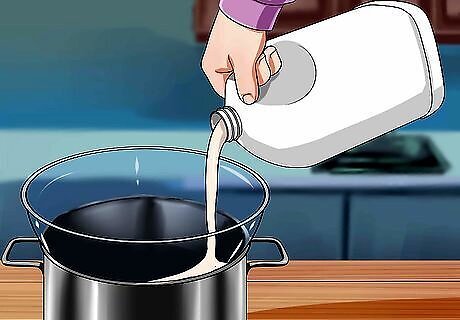
Pour the raw milk into the inner pan. Pour through a strainer if the milk hasn't been strained since it left the animal. For small home batches, it's easiest to pasteurize milk one gallon (3.8 liters) at a time.
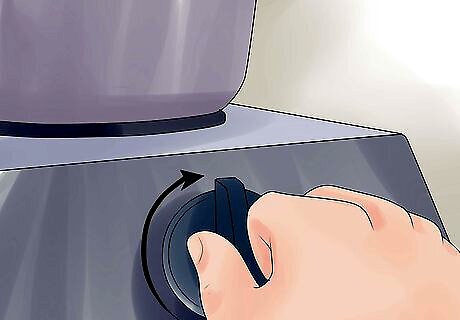
Heat while stirring. Place the double boiler over medium–high heat. Stir frequently to help equalize the temperature and prevent scorching.

Watch the temperature closely. Make sure the thermometer probe is not touching the sides or base of the pot, or the measurement will be off. As the milk approaches the temperature listed below, stir constantly and draw milk from the bottom of the pan to eliminate hot and cold spots. There are two ways to pasteurize milk, both of them safe and USDA-approved: High Temperature Short Time (HTST)Faster, with less effect on taste and color.1. Bring the temperature to 161ºF (72ºC).2. Keep it at or above this temperature for 15 seconds.3. Remove from heat immediately. Low Temperature Long Time (LTLT)Recommended for cheesemaking to avoid accidental overheating.1. Bring the temperature to 145ºF (63ºC).2. Keep the milk at or just above this temperature for 30 minutes. Restart the timer if the temperature drops below 145ºF.3. Remove from heat.

Cool the milk rapidly in the ice bath. The faster you cool the milk, the better it will taste. Put it in the ice bath and stir frequently to help release heat. After a few minutes, replace some of the warming water with cold water or ice. Repeat this whenever the water warms — the more often, the better. The milk is ready once it reaches 40ºF (4.4ºC). This can take as long as forty minutes in an ice bath, or twenty minutes in an ice cream machine. If the milk does not reach 40ºF (4.4ºC) within four hours, assume it has been recontaminated. Pasteurize it again and cool it more rapidly.
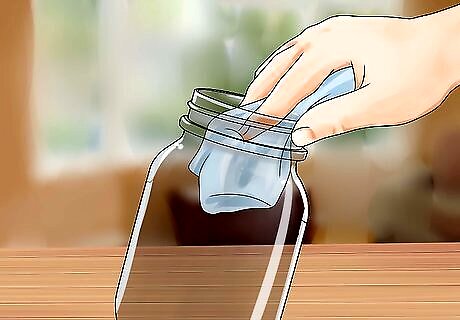
Clean and sanitize containers. Clean a milk container thoroughly with hot water and soap before using. For best results, sterilize a heat-safe container after cleaning by submerging it in hot water (at least 170ºF / 77ºC) for 30 to 60 seconds. Let the container air dry. Using a cloth towel can reintroduce bacteria.
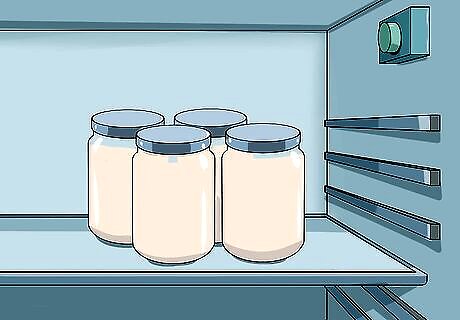
Store in the refrigerator. Pasteurization only kills 90 to 99% of bacteria in the milk. You still need to refrigerate the milk to prevent the bacteria population from growing to unsafe levels. Seal the container tightly and keep it away from light. Pasteurized milk without further treatment typically lasts 7–10 days if you pasteurize soon after milking. The milk will go bad sooner if stored above 45ºF (7ºC), if new contamination is introduced (for instance by touching it with a dirty spoon), or if the raw milk was not stored correctly before pasteurization.
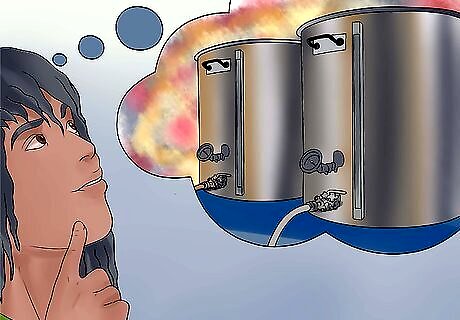
Upgrade to specialized tools. If you have your own animals and pasteurize a lot of milk, consider buying a dedicated milk pasteurizing machine. A machine can pasteurize larger batches and may do a better job preserving the milk's flavor. "Batch" or LTLT (low temperature long time) machines are the cheapest and simplest, but HTST (high temperature short time) machines are faster and usually have less effect on taste. The milk still needs to cool rapidly for the pasteurization to work. Remember to transfer the milk to a cold water bath if your machine doesn't include this step. The HTST machine tends to break down (denature) fewer proteins, as long as it doesn't heat above 172ºF (77.8ºC). This gives more consistent results when the milk is used for cheese.


















Comments
0 comment